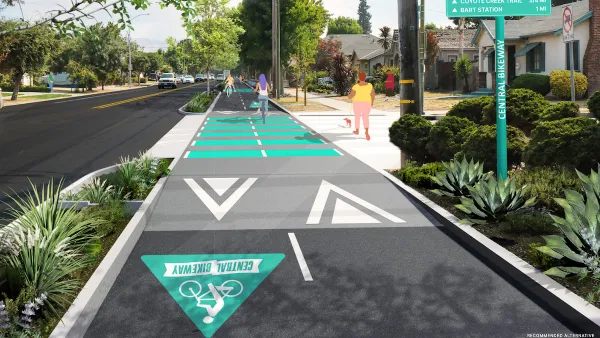The Obama Administration's most powerful environmental initiative, the Clean Power Plan, was put on hold by the Supreme Court last February. It was heard by 10 judges of the U.S. Court of Appeals in Washington, D.C. on September 27.

Last February, the Supreme Court ruled 5-4 in favor of 29 states and state agencies who had requested a stay of the president's strongest climate initiative, the Clean Power Plan for existing power plants that requires that by 2030, "carbon pollution from the power sector be 32 percent below 2005 levels." [See EPA fact sheet: Overview of the Clean Power Plan.].
Opponents to the rule claim that the plan, approved by the U.S. Environmental Protection Agency, was an overreach of the president's use of executive authority and that it will cause a loss of coal-related jobs as the rule unfairly targets coal plants, the largest polluters in the country. In addition, they claim it will increase utility rates. Their case was argued by West Virginia Solicitor General Elbert Lin.
"Coal generates almost 96 percent of the [West Virginia's] electricity, the highest share in the country," according to the Institute for Energy Research (IER). "As a result, West Virginia has the 11th lowest average retail electricity price in the nation."
IER outlines the three key arguments against the Clean Power Plan:
- It’s unconstitutional
- It’s inconsistent with the statutory structure of the Clean Air Act.
- “Generation shifting” is not a valid system of emission reduction
Supporters of the rule countered that it will result in the creation of new jobs in renewable energy, reports Michael Biesecker, energy and environmental reporter for The Associated Press. He adds that the plan is considered essential for the United States to meet its targets under the 2015 Paris Climate Agreement (COP21).
Normally the case before the United States Court of Appeals for the District of Columbia Circuit would have been heard by a three-judge panel, as opposed to 10 judges. Biesecker explains that in matters of great importance, rules allow for an en banc review, allowing the case to bypass one step. Not participating was Chief Judge Merrick B. Garland who awaits possible confirmation as President Obama's nomination to replace the late Justice Anthony Scalia.
Regardless of the ruling by the appeals court, it is widely believed that the case will return to the Supreme Court which could mean a tie vote depending on the confirmation of a replacement for Justice Scalia.
Related articles
For POLITICO, Anthony Adragna sets the stage for the Tuesday showdown and Josh Gerstein reports that "the American Coalition for Clean Coal Electricity has been running radio ads focused squarely on Tuesday's oral arguments before a 10-judge, en banc sitting of the D.C. Circuit Court of Appeals."
In this New York Times op-ed by William D. Ruckelshaus, administrator of the Environmental Protection Agency under Presidents Richard M. Nixon and Ronald Reagan; and William K. Reilly, the agency’s administrator under President George H.W. Bush, a case is made as to why the Clean Power Plan is in the best interests of the United States by targeting the largest source of carbon emissions.
Also in The New York Times, climate and energy reporter Coral Davenport explains why the Clean Power Plan's "legal fate, widely expected to be ultimately decided by the Supreme Court, could rest on a clerical error in an obscure provision of a 26-year-old law."
Related Planetizen coverage:
-
Paris Climate Agreement Signed, but Troubles Loom in the U.S., April 23, 2016
-
Supreme Court Puts Obama's Key Climate Initiative on 'Hold', February 10, 2016
- President Obama's Clean Power Plan Is Nation's Strongest Climate Initiative, August 3, 2015
FULL STORY: US appeals court hears arguments in Clean Power Plan case

Planetizen Federal Action Tracker
A weekly monitor of how Trump’s orders and actions are impacting planners and planning in America.

Silicon Valley ‘Bike Superhighway’ Awarded $14M State Grant
A Caltrans grant brings the 10-mile Central Bikeway project connecting Santa Clara and East San Jose closer to fruition.

Amtrak Cutting Jobs, Funding to High-Speed Rail
The agency plans to cut 10 percent of its workforce and has confirmed it will not fund new high-speed rail projects.

Trump Executive Order on Homelessness Calls for Forced Institutionalization
The order seeks to remove legal precedents and consent decrees that prevent cities from moving unhoused people from the street to treatment centers.

Cash-Strapped RIPTA Unveils Massive Cuts to Bus Service Across the State
Just 9 bus routes untouched as agency proposes to slash trips but CEO remains mum on potential layoffs.

How a Truck Tax Could Save the Highway Trust Fund
The freight trucking industry is a prime candidate for a mileage tax that would boost road maintenance revenue.
Urban Design for Planners 1: Software Tools
This six-course series explores essential urban design concepts using open source software and equips planners with the tools they need to participate fully in the urban design process.
Planning for Universal Design
Learn the tools for implementing Universal Design in planning regulations.
Yukon Government
Caltrans
New Jersey Institute of Technology
Mpact (founded as Rail~Volution)
City of Camden Redevelopment Agency
City of Norman, Oklahoma
City of Portland
City of Laramie





























